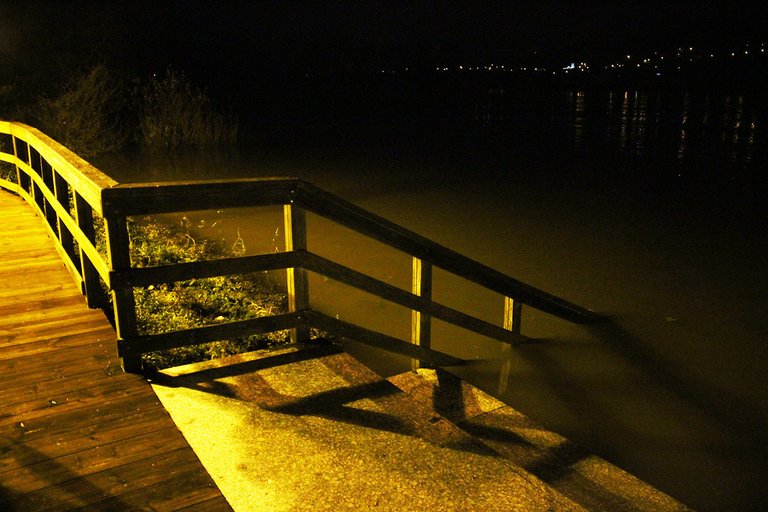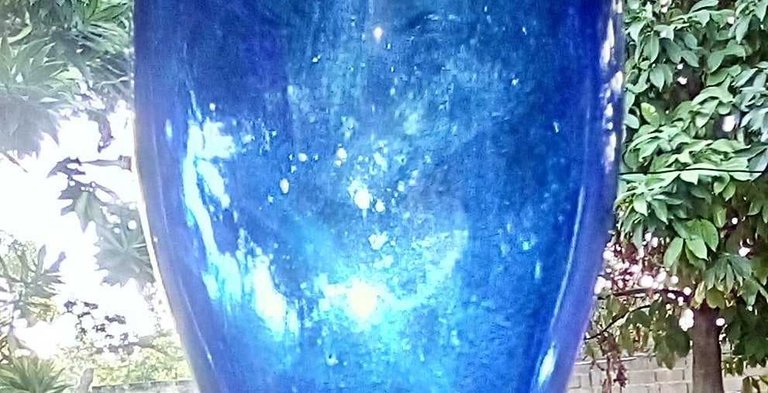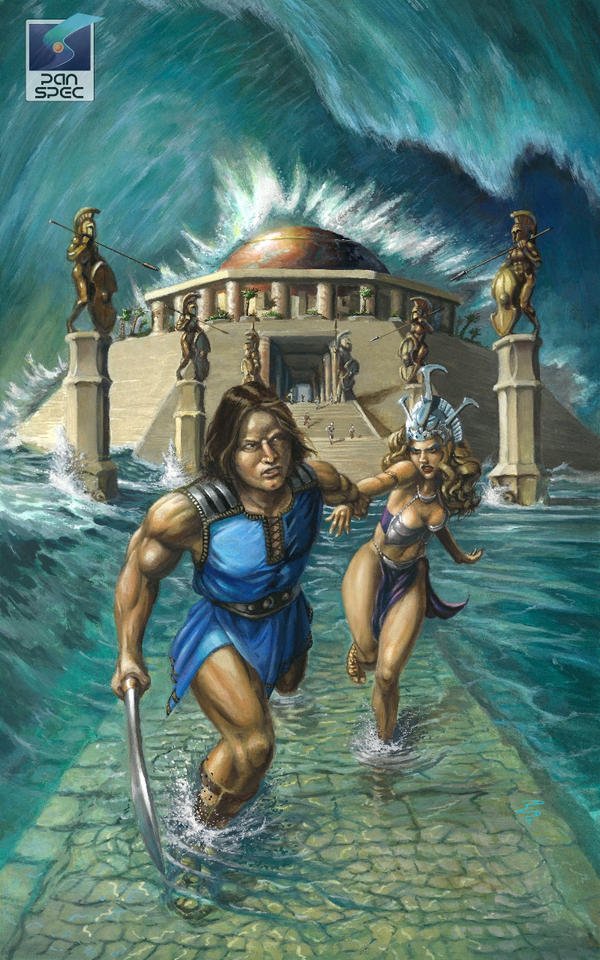Saludos, Comunidad Literatos. A continuación, el capítulo 6 de Astrágalo, un cuento de ficción, que les comparto esperando, sea del agrado de algunos, que me lo hagan saber y si no les place, criticarlo.
..........................................................................................................................
Astrágalo 6. Una leyenda de la Amazonia.
Han transcurrido unos días tranquilos en el monte Calcáneo y los alrededores, pero luego de un día soleado, el cielo se ha cubierto de nubes grises y densas que han anticipado el ocaso en más de una hora.
A la puerta de la estación se ha acercado un individuo alto, de tez morena, vestido de caqui y sombrero de pelo e´guama del mismo color; le acompañan varios indígenas, que se mantienen detrás, a veinte metros de distancia.
Solicita hablar con la autoridad del lugar, en perfecto inglés y se identifica como Hari Miller, explorador amazónico.
El vigilante decide avisar al Dr. Wharton, a pesar de que la autoridad principal sea la Dra. Chang, quien al enterarse de la novedad no tarda en presentarse en la puerta, donde los dos hombres conversan, mientras dos indígenas se acercan poco a poco y en su lengua dirigen unas palabras, acompañadas de gestos apremiantes.
Cuando la doctora llega, escucha como Miller le dice a Wharton: "Les sugiero no demorarse y seguir cuanto antes a los indios, ellos conocen el terreno mejor que yo, y aseguran que cuando empiece a llover no se podrá salir de aquí, incluso este promontorio quedará cubierto por la crecida del río."
El visitante se da media vuelta para reunirse con los indígenas, al tiempo que les señala el lugar hacia donde ellos se dirigen.
 Fuente
Fuente
Cuando Wharton y Chang observan que caen las primeras gotas, se reúnen con los demás que ya vieron los pronósticos climáticos y deciden seguir el consejo del desconocido. Para el momento en que han reunido sus equipajes, el nivel del agua ha subido y no pueden usar sus vehículos, y optan por abandonar el campamento por un sendero en la parte más alta y seguir las antorchas con que se iluminan los indígenas, que les llevan una ventaja considerable.
Cuando el grupo de científicos alcanza el campamento de los indígenas, estos se encuentran instalados bajo pequeños techos de palma o toldos de lona tendida entre los árboles. Los doctores se sorprenden de ver que cada pequeño grupo está sentado al rededor de una hoguera.
Mientras se maravillan de los recursos de los pueblos amazónicos, que sin equipaje aparente resuelven la situación, se les acerca Miller para invitarlos a cobijarse y secar sus ropas debajo de una de las lonas de mayor tamaño, donde un anciano mantiene ensimismados a los presentes con un relato acompañado de gestos e invocaciones.
Cuando se instalaron, Miller les contó su versión del relato que el anciano seguía contando. La leyenda del rey Guanico.
En tiempo de los ancestros, cuando la Amazonia estaba poblada y había enormes ciudades, cada una gobernada por un rey. Había ciudades desde la desembocadura de los grandes ríos, hasta las fuentes en las montañas (Los Andes), la mayor, Sariyana, no lejos de aquí, al pie de uno de los pilares azules que controlaban las aguas y las naves que se deslizaban por los ríos comunicándolas y trasportando las cosechas. Pero el poderoso rey de Sariyana, del que borraron el nombre para siempre por sus depravados gustos, se alió con Guanico, otro rey de mala entraña que se apoderó de la ciudad de las flores, planeando esclavizar a la población y venderlos al rey de las montañas donde extraían el metal blanco que ahora llaman plata. Aseguran que Guanico era hijo de un cacique menor que lo engendró en una llama de la cordillera y cuando creció descubrió que era estéril por ser hijo de hombre y bestia. Esto lleno de odio a Guanico*, que acordó con el comedor de niños de Sariyana cambiar a su gente por plata.
Cuando las demás ciudades se percataron del mal, se levantaron en guerra contra los malignos, derribando la columna azul de Sariyana, sin percatarse de que al derribar una de las columnas, roto el equilibrio, caerían las otras.
Las aguas desbordaron los cauces, inundaron las ciudades y las naves varadas ya no se movieron de su lugar.

Cuando Ustedes se instalaron en la región con su esfera y la llenaron de maquinaria, los indígenas de la zona los observaron con cautela y desconfianza. Continuo relatándonos el Sr. Hari Miller, quien nos informó que era lingüista y llevaba dos décadas viviendo en el Amazonas, estudiando las diferentes lenguas, y su cultura.
Cuando hace menos de una semana vieron surgir una columna azul, despacharon emisarios en todas direcciones y los que ven aquí son los primeros en regresar.
Esta inesperada tormenta retrasará a los demás y ahora está por verse si su instalación resistirá la inundación o el agua la destruye, llevándose la esperanza de los indios de ver una nueva era dorada, como la de sus leyendas.
 Fuente
Fuente
(Continuará …)
(*) Resulta interesante leer en las crónicas de los frailes espanoles que vieron por primera vez las llamas y alpacas, pensaron que se trataba de un híbrido de burro y oveja.

Now in English
Greetings, Literary Community.
Next, chapter 6 of Astragalus, a fictional story, which I share with you hoping that it will be liked by some who let me know and if they don't like it, criticize it.
..............................................................................................................
Astragalus 6. A legend of the Amazon.
A few quiet days have passed on Mount Calcaneus and the surrounding area, but after a sunny day, the sky has been covered with gray and dense clouds that have anticipated the sunset by more than an hour.
A tall, dark-skinned individual, dressed in khaki and wearing an e'guama hair hat of the same color, has approached the door of the station. He is accompanied by several indigenous people, who remain behind, twenty or meters away.
He requests to speak with the authority of the place, in perfect English and identifies himself as Hari Miller, Amazonian explorer.
The guard decides to notify Dr. Wharton, even though the main authority is Dr. Chang, who upon learning the news soon appears at the door, where the two men talk, while two indigenous people approach little by little. and in their language they say some words, accompanied by urgent gestures.
When the doctor arrives, she listens to Miller tell Wharton: I suggest you not delay and follow the Indians as soon as possible, they know the terrain better than I do, and they assure that when it starts to rain you will not be able to leave here, even this promontory. It will be covered by the rising river.
The visitor turns around to meet the indigenous people, while pointing out the place where they are going.
 Source
Source
When Wharton and Chang see the first drops falling, they gather with the others who have already seen the weather forecasts and decide to follow the stranger's advice. By the time they have gathered their luggage, the water level has risen and they cannot use their vehicles, and they choose to leave the camp along a path at the highest part and follow the torches with which the indigenous people illuminate themselves, which They have a considerable advantage.
When the group of scientists reaches the indigenous camp, they are installed under small palm roofs or canvas awnings stretched between the trees. The doctors are surprised to see that each small group is sitting around a bonfire.
While they marvel at the resources of the Amazonian peoples, who with no apparent baggage resolve the situation, Miller approaches them to invite them to take shelter and dry their clothes under one of the largest tarps, where an old man keeps those present engrossed with a story accompanied by gestures and invocations.
When they settled in, Miller told them his version of the story the old man kept telling. The legend of King Guanico.
In the time of the ancestors, when the Amazon was populated and there were enormous cities, each one governed by a king. There were cities from the mouth of the great rivers to the sources in the mountains (The Andes), the largest, Sariyana, not far from here, at the foot of one of the blue pillars that controlled the waters and the ships that glided along. the rivers communicating them and transporting the crops. But the powerful king of Sariyana, whose name was erased forever due to his depraved tastes, allied himself with Guanico, another evil king who took over the city of flowers, planning to enslave the population and sell them to the king of flowers. mountains where they extracted the white metal that they now call silver. They claim that Guanico was the son of a minor chief who fathered him in a llama in the mountain range and when he grew up he discovered that he was sterile because he was the son of man and beast. This filled with hatred for Guanico*, who agreed with the Sariyana children's canteen to exchange his people for money.
When the other cities realized the evil, they rose up in war against the evil ones, demolishing the blue column of Sariyana, without realizing that by demolishing one of the columns, the balance being broken, the others would fall.
The waters overflowed the channels, flooded the cities and the stranded ships no longer moved from their place.

When you settled in the region with your sphere and filled it with machinery, the indigenous people of the area observed you with caution and distrust. Mr. Hari Miller continued to tell us, who informed us that he was a linguist and had been living in the Amazon for two decades, studying different languages and their culture.
When less than a week ago they saw a blue column emerge, they sent emissaries in all directions and those who see here are the first to return.
This unexpected storm will delay the others and now it remains to be seen if their facility will withstand the flood or the water destroys it, taking away the hope of the Indians of see a new golden era, like that of its legends.
 Source
Source
(To be continue …)
- It is interesting that in the chronicles of the Spanish friars who saw llamas and alpacas for the first time, they thought that they were a hybrid of a donkey and a sheep.
 [MY PARTICULAR VISION OF THE WORLD]
[MY PARTICULAR VISION OF THE WORLD]
This post has been curated by @mikezillo on behalf of @ecency curation team.
Keep up the great work!
Esta publicación ha recibido el voto de Literatos, la comunidad de literatura en español en Hive y ha sido compartido en el blog de nuestra cuenta.
¿Quieres contribuir a engrandecer este proyecto? ¡Haz clic aquí y entérate cómo!
Buenos días @felixmarranz, la historia me sigue intrigando, y aquí estoy esperando la próxima entrega. un saludo
Buenos días, buenas tardes para ti.
Trabajando en el próximo capítulo, pero no creo que esté listo hasta mañana.
Gracias por comentar y estar pendiente, Buena musica el disco compartido.
Una preciosa leyenda, en verdad soy un fanático de estas que nos envuelven con mucha magia y fantasia. En verdad que gustó mucho leer este texto, muy buen trabajo.
Gracias por compartir.
Buena noche.
Gracias por comentar, espero se acerque a leer el próximo capítulo.
Que disfrute de un feliz día de paz y en salud.
Yay! 🤗
Your content has been boosted with Ecency Points, by @felixmarranz.
Use Ecency daily to boost your growth on platform!
Congratulations @felixmarranz! You received a personal badge!
You can view your badges on your board and compare yourself to others in the Ranking
Check out our last posts: